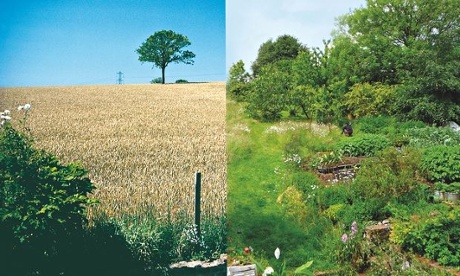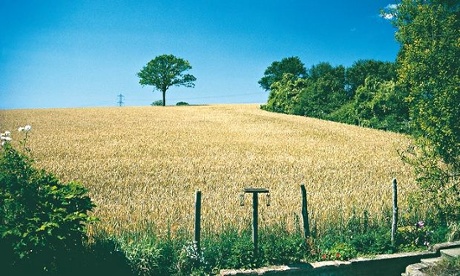Maddy Harland on growing an extraordinary range of food when a field of poor soil was transformed into a permaculture paradise
 Years ago, before our children were born and after two years of searching, my husband Tim and I found a dilapidated flint cottage up a lane on the edge of a semi-rural village in Hampshire. Its hideous ‘60s back half extension with no foundations was capped by a flat roof in dire need of repair … and the garden was the size of a handkerchief. But it overlooked fields and was near a footpath that led to semi-ancient beech woods and the South Downs Way. Its advantages meant we were in a beautiful location, and its disadvantages meant we could afford to buy it.
Years ago, before our children were born and after two years of searching, my husband Tim and I found a dilapidated flint cottage up a lane on the edge of a semi-rural village in Hampshire. Its hideous ‘60s back half extension with no foundations was capped by a flat roof in dire need of repair … and the garden was the size of a handkerchief. But it overlooked fields and was near a footpath that led to semi-ancient beech woods and the South Downs Way. Its advantages meant we were in a beautiful location, and its disadvantages meant we could afford to buy it.
Our dream of having a bit of the adjoining field at the back of the house to extend the garden soon materialised in 1990 when we were offered the opportunity to buy a part of it. We begged and scraped together the cash and became proud owners of a third of an acre of bare, flinty subsoil that had been degraded by intensive farming and regular exposure to the elements. Our first job was to secure and build the soil, so we planted it up as a wildflower meadow bordered by a hedgerow made up of 23 native species, all grown from native Hampshire seed stock. The soil was poor and wounded like a scab. Nature quickly covered it with wildflowers, initially mainly ribwort, used as an ancient herbal remedy to heal infection and staunch cuts. Very appropriate.
 Maddy and Tim extended their garden by buying part of an adjoining field, but the soil was poor and 'wounded like a scab'. Photograph: Maddy Harland
Maddy and Tim extended their garden by buying part of an adjoining field, but the soil was poor and 'wounded like a scab'. Photograph: Maddy Harland
We were amateur conservationists at that time and our focus was biodiversity. Then along came permaculture in the form of a Channel 4 documentary called In Grave Danger of Falling Food. Tim was smitten. Why couldn’t we have our conservation project and eat it too? I wasn’t so sure. I wanted to read about it and test permaculture out. But Tim had what I would describe as a brainstorm – he could see that conservation alone was not enough and his enthusiasm was relentless. He went on a forest garden course with Patrick Whitefield (a permaculture teacher and author) and the late Robert Hart (the pioneer of temperate forest gardens), and was soon working out a permaculture design for the whole site.























